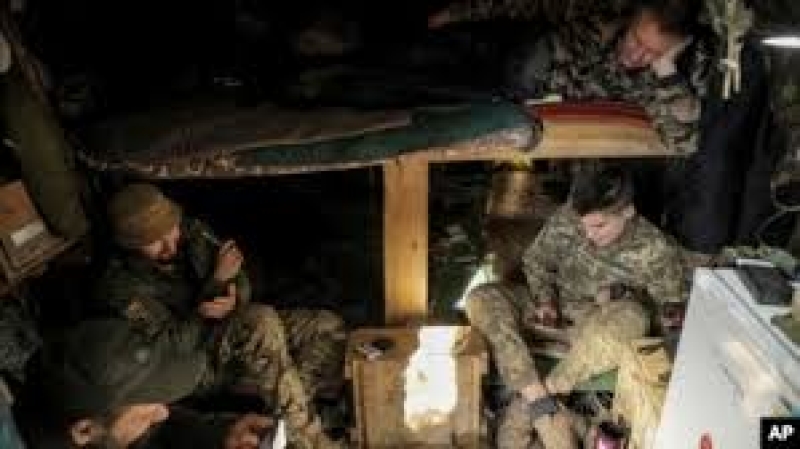- BNP senses ‘dangerous conspiracy’ against democratic transition |
- CEC Vows Credible Election to End Stigma |
- High-level meeting reviews country’s economic progress |
- Dhaka suspends visa, consular services at its Delhi, Agartala Missions |
- Govt to cut savings certificate profit rates from January |
G7 is finalizing $50B loan to Ukraine

A $50 billion loan to Ukraine from the G7 major industrialized nations is moving forward after months of negotiations, with countries announcing their contributions to the package this week.
The loan package is aimed at providing Ukraine with an economic lifeline from $280 billion worth of Russian assets frozen since Russia invaded Ukraine in February 2022. According to the plan, the loan will be repaid with interest accumulating on the frozen Russian assets rather than confiscating the frozen assets themselves.
This “creative” solution is intended to provide Ukraine with the economic assistance it urgently needs “without burdening American taxpayers,” U.S. President Joe Biden said in a statement, adding that “these loans will support the people of Ukraine as they defend and rebuild their country. And our efforts make it clear: Tyrants will be responsible for the damages they cause.”
“This will really support us,” Ukrainian President Volodymyr Zelenskyy said in a statement thanking allies for the decision.
The United States will contribute $20 billion to the loan, while Canada and Britain announced contributions of $3.7 billion and $2.94 billion, respectively. The European Parliament on Tuesday approved a European Union decision to provide up to $38 billion as part of the loan, reports VOA.
While the details of the loan are still being worked out, donors announced the funding will cover Ukraine’s economic and defense needs. U.S. deputy national security adviser Daleep Singh told reporters if the U.S. Congress approves the loan contribution, the Biden administration plans to allocate half of the $20 billion to support Ukraine’s economy and the other half for defense support.
The United Kingdom's $2.94 billion is to be used solely for Ukraine’s military, British Defense Minister John Healey announced this week.
“With this decision, Ukraine is confident that it will have money to fully fund the critically important expenditures next year, including wages to teachers, doctors, pensions,” Roman Kachur, alternate executive director for Ukraine at the World Bank, told VOA.
According to the International Monetary Fund, the loan is crucial if Ukraine is to meet its financing needs.
“We have talked with [the] Ukrainian government about the ways to close the financing gap, which has opened up because the war takes longer than everybody expected and therefore more budget financing will be needed,” Alfred Kammer, director of the IMF’s European Department, told VOA.
The fund, which has a four-year program for Ukraine, expects the multiyear financing through the loan will help the country cover a financing gap that now exceeds $150 billion, Kammer added.
Washington economist Anders Aslund called the loan plan “excellent,” posting on X: “Finally, Ukraine is about to get relevant financial support.”
The G7 decision has been criticized for falling short of an outright seizure of the frozen Russian assets.
“I don’t think we should be celebrating this as Ukraine is not going to get the underlying $330bn,” economist Timothy Ash of BlueBay Asset Management said in an email to VOA. Ash blamed “the vested interests in Europe” for blocking a decision to seize the assets.
The plan to divide funding from the loan between economic and military support worries some observers in Ukraine.
“Previously, the discussion was that the funding will go to fund economic stability. Now, we are under the impression that the funding will also be used for defense support,” Oleksandra Betliy, chief researcher at the Institute of Economic Research in Kyiv, told VOA. “This is fine for the next year, where the budget deficit is $38 billion, but the issue is with the 2026 budget.”
She added that Ukraine’s funding needs will remain high for years to come.
“Even if 2026 will be victorious, we will further need to fund the military for it to be strong, and social payments will be even higher than today,” she said.
To ensure transparency and accountability, funding from the loan will be distributed via an intermediary fund set up by the World Bank, which according to Singh is “subject to robust accountability and transparency measures.”
Kachur agreed, saying the World Bank’s control over the funding will eliminate any perception of misuse. In addition, according to Ukrainian officials, the money will not be repurposed once it is in the World Bank’s fund.
“Even if there is a change in the political will, this funding will still remain available to Ukraine and will be transferred only to Ukraine," Kachur said.
The details of the loan package have not yet been finalized. G7 finance ministers plan to discuss the loan on the margins of this week’s annual IMF and World Bank meetings in Washington.

